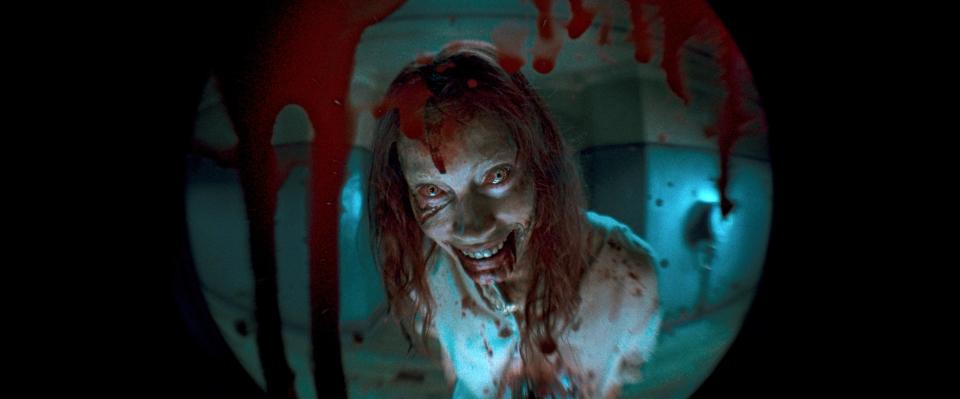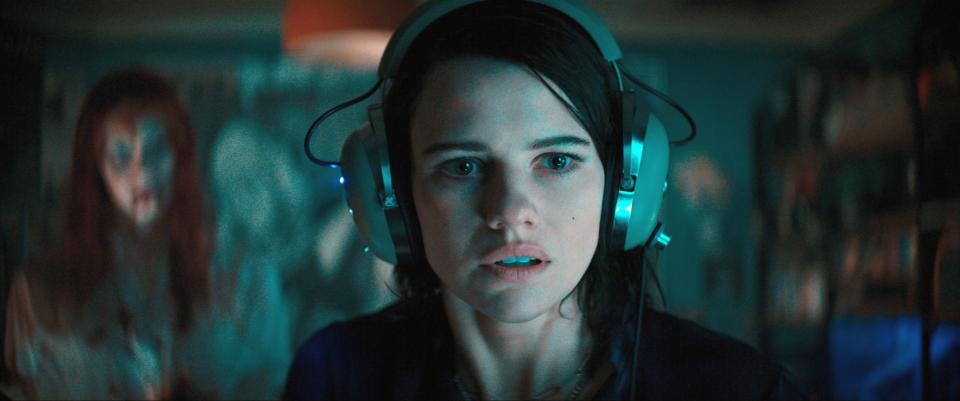Why the Terrifyingly Immersive Sound of ‘Evil Dead Rise’ Demands to Be Heard in Theaters

- Oops!Something went wrong.Please try again later.
- Oops!Something went wrong.Please try again later.
When Peter Albrechtsen signed on as sound designer for “Evil Dead Rise,” director Lee Cronin’s addition to the now 42-year-old horror franchise, he received a valuable gift from “Evil Dead” royalty. “One of the first things that happened when I got this job was that I got a hard drive with digitized versions of sound effects from the first two films,” Albrechtsen told IndieWire. The drive came from Bruce Campbell, the star and co-producer of the first three “Evil Dead” movies (as well as the television series “Ash vs. Evil Dead”), a sound enthusiast who wanted Albrechtsen to have access to the DIY work he and director Sam Raimi did back in the early 1980s. “It wasn’t just the mixes, it was the actual recordings Bruce and Sam did together,” Albrechtsen said. “Every sound from those movies was suddenly available to us.”
Those sounds served as the starting point for a spectacularly immersive sound mix that makes “Evil Dead Rise” one of the scariest horror films in years and one that demands to be seen in a theater. Using the principles of the original “Evil Dead” movies as a baseline and updating them for a modern era, Albrechtsen takes full advantage of the surround channels to make the film’s Los Angeles apartment building come to life as a living, breathing, terrifying space. “We really wanted to envelop the audience in this film,” Albrechtsen said. “It’s a claustrophobic space, and by placing the sounds all around the audience, you get the feeling you’re in there with the characters — when a door opens, it doesn’t just open in the front speakers, the sound travels all the way back to the surround speakers.”
More from IndieWire
How 'Polite Society' Created an Exhilarating Blend of Action from 'The Matrix,' Eunice Huthart, More
Even within spaces as small as a peephole, there are fully realized sound environments. “We mix the sound so that it’s all around you, so you feel like you’re not just looking through the peephole, you’re in the peephole,” Albrechtsen said. “We really wanted to create the physical, visceral experience of being inside the film with the characters.” That subjective quality comes straight from the first two “Evil Dead” movies, to which Albrechtsen draws a direct line in the opening moments of “Evil Dead Rise.” “The very first sound you hear in the original ‘Evil Dead’ is a fly, and that exact same fly sound is one of the first sounds you hear in ‘Evil Dead Rise.’ It’s also the very last sound you hear.”
The fly is only the first of many sonic references to the first two “Evil Dead” movies and Albrechtsen credits Campbell with taking a proactive role in helping make the most of the original sounds. “He was a big part of the sound editing process,” Albrechtsen said. “I remember him emailing me and saying, ‘Now that you’ve got all those sounds, I just want to come into the studio and share some thoughts about which ones would be great to have in the new movie.’ I was thinking, ‘That sounds amazing, but he’ll probably only be in the studio for 15 minutes, and then he’ll leave.'” Instead, Campbell spent hours with Albrechtsen telling stories about the sources of various sounds, like the cabin sound in the original movie that came from the wind outside a hotel room where he and Raimi were staying.

©Warner Bros/Courtesy Everett Collection
That wind finds its way into a vault that plays a key role in “Evil Dead Rise,” and part of the fun for fans of the franchise is spotting the echoes of earlier films. For an early possession scene in an elevator, for example, Albrechtsen remixes some of the wilder sounds from the first two movies to horrifying and darkly comic effect. “I wanted to connect that to the original films to make it seem like a force that’s bringing us from the historical ‘Evil Dead’ into this new environment,” Albrechtsen said. “If you are a hardcore ‘Evil Dead’ nerd, you will recognize a lot of the sounds in this movie.”
Albrechtsen and Cronin also looked beyond the “Evil Dead” movies for inspiration, drawing from a number of thrillers to create their layered and assaultive mix. “Lee talked about three movies that were important, and one of them was ‘The Exorcist‘ because of the demon sounds,” Albrechtsen said. “When the girl gets possessed, it’s not a synthetic monster sound, it’s organic, an old woman’s voice. It’s very human, and that makes it scarier. We approached ‘Evil Dead Rise’ the same way, with a lot of voice recording that finds its way into the various demon voices of the film.”

©Warner Bros/Courtesy Everett Collection
Albrechtsen also studied David Fincher’s “Panic Room,” which, like “Evil Dead Rise,” takes place largely in a confined urban space. “The sound designer, Ren Klyce, did these amazing things giving each room its own signature so that you never got tired of the location,” Albrechtsen said, adding that the third movie he and Cronin were inspired by was a non-“Evil Dead” Sam Raimi film. “We looked at ‘Drag Me to Hell’ for its clarity. The sound is very, very powerful, but it’s not just a wallpaper of sound — it’s a movie of really powerful moments.”
Albrechtsen’s love of “Drag Me to Hell” and the original “Evil Dead” made Raimi’s approval at the film’s South by Southwest premiere a highlight of his career. “I grew up with the ‘Evil Dead’ movies and had a VHS copy I watched so many times that the tape crumbled,” he said. “Meeting Sam Raimi and hearing him say, ‘You’ve done excellent work,’ made me really happy. To get that kind of compliment from the filmmaker behind the original ‘Evil Dead’ movies was amazing.”
A Warner Bros. release, “Evil Dead Rise” is now in theaters.
Best of IndieWire
Every Palme d'Or Winner from the Cannes Film Festival, Ranked
Martin Scorsese's Favorite Movies: 60 Films the Director Wants You to See
Sign up for Indiewire's Newsletter. For the latest news, follow us on Facebook, Twitter, and Instagram.

